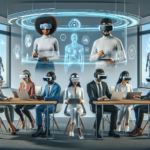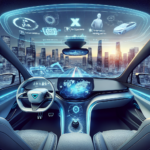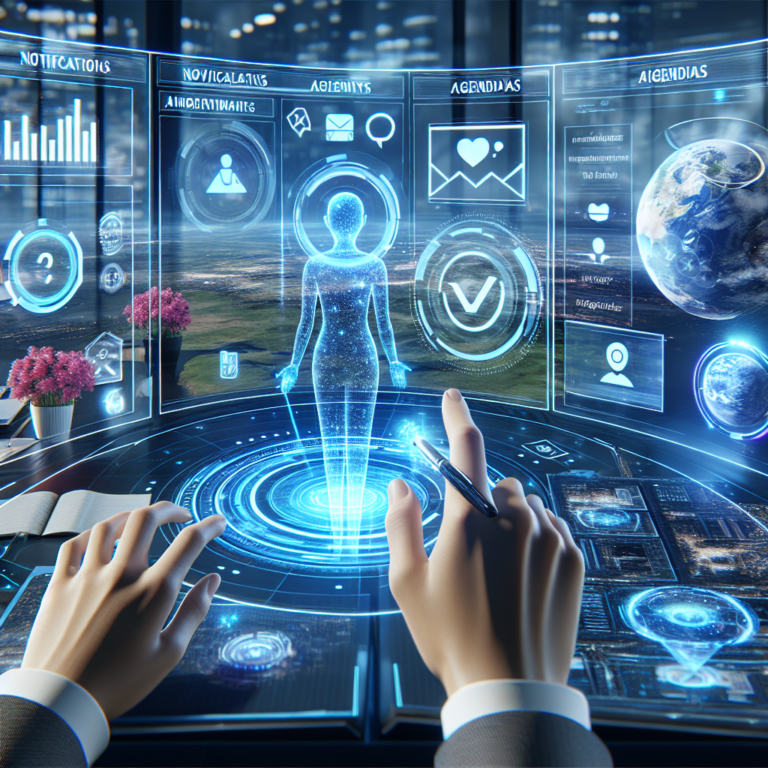Unlocking Supply Chain Efficiency with XR Technology: The Future of Immersive Simulations 🚀
Introduction to XR Technology in Supply Chain Management
In today’s fast-paced and competitive market, businesses are constantly seeking innovative solutions to optimize their operations. One such groundbreaking advancement is **Extended Reality (XR)** technology, which encompasses virtual reality (VR), augmented reality (AR), and mixed reality (MR). Together, these immersive experiences are revolutionizing supply chain management, enabling companies to streamline their processes and enhance productivity.
What is XR Technology? 🤔
Before diving into its applications in supply chain management, let’s clarify what XR technology entails.
- Virtual Reality (VR): A fully immersive digital environment that simulates real-world experiences.
- Augmented Reality (AR): An interactive experience that overlays digital information onto the real world.
- Mixed Reality (MR): A blend of both VR and AR, allowing digital and physical objects to coexist and interact in real-time.
These technologies have not only enhanced gaming and entertainment but have also found their way into various industries, including logistics and supply chain management.
The Role of XR in Supply Chain Management
XR technology is a game changer for supply chain management because it offers unique benefits that traditional methods cannot. Here’s how XR is making its mark:
1. Enhanced Training Programs 🎓
Training staff in a complex supply chain environment can be challenging. XR technology provides a safe platform for immersive training simulations where employees can learn:
- Warehouse operations
- Inventory management
- Equipment handling and safety protocols
By allowing team members to practice in a realistic but controlled setting, XR minimizes errors and accelerates the learning curve.
2. Real-Time Problem Solving ⚙️
Supply chains are often fraught with unexpected challenges. XR technology can create real-time simulations that allow managers to visualize potential disruptions and devise solutions on the spot. For example:
- Using AR glasses, warehouse managers can overlay data regarding stock levels, order statuses, and supply chain metrics onto their field of view.
- This enriched insight enables quicker decision-making and reduces downtime in operations.
3. Improved Collaboration and Communication 🤝
In supply chain management, seamless communication among teams, suppliers, and customers is critical. XR technology fosters collaboration through:
- Virtual meetings where teams can share and discuss 3D models of products, facilities, and logistics systems.
- Simulations that allow external stakeholders to participate in problem-solving sessions remotely, enhancing transparency and trust.
Applications of XR Technology in Various Supply Chain Phases
To maximize its benefits, businesses can strategically apply XR technology across different stages of the supply chain:
1. Planning and Forecasting 📈
XR technology can provide visual aids for data analytics, making it easier for teams to forecast demand and plan resources effectively.
- Interactive dashboards can represent complex data sets visually.
- This aids in better analysis and understanding of historical trends, seasonal demands, and potential market shifts.
2. Procurement and Inventory Management 📦
Managing inventories can be a daunting task, especially for businesses dealing with substantial stock levels. With XR, businesses can:
- Utilize AR to optimize storage space by visualizing the best arrangement for products, thus enhancing retrieval speed and accuracy.
- Implement VR scenarios for procurement team training, ensuring they are equipped with the skills to negotiate effectively with suppliers.
3. Logistics and Distribution 🚚
The logistics phase benefits immensely from XR technology’s ability to visualize routes and processes:
- Using AR tools, logistics managers can map out delivery routes, assess traffic conditions, and optimize delivery times.
- VR simulations can help train drivers on safety protocols and effective navigation strategies, reducing accident rates and operational delays.
4. Customer Interaction and Experience 📞
Finally, XR technology can enhance customer interactions by providing immersive experiences related to products and services.
- Brands can use AR to allow customers to visualize how a product will fit into their lifestyle—think furniture placement in a living room.
- Virtual tours of warehouses or product manufacturing processes can enhance transparency and increase customer trust.
Challenges in Adopting XR in Supply Chain Management 🚧
While XR technology offers tremendous potential, integrating this technology into existing supply chain frameworks can present challenges:
- High Initial Costs: The investment in VR/AR hardware and software can be substantial, particularly for smaller businesses.
- Technical Expertise: Implementing XR solutions may require specialized skills not readily available in-house.
- Change Management: Employees may resist changes to established processes, necessitating comprehensive training and support.
Mitigating Challenges with Strategic Planning
To overcome these obstacles, businesses should approach XR technology adoption with a well-thought-out strategy:
- Start small by piloting XR projects in specific departments.
- Engage in employee training sessions to ease the transition into new systems.
- Collaborate with technology partners who can provide the necessary support and guidance.
The Future of XR in Supply Chain Management 🌟
As XR technology continues to evolve, its potential applications in supply chain management will expand. Innovations in AR and VR will likely lead to even more sophisticated tools for optimizing operations.
From improving efficiency in training programs to facilitating real-time problem-solving and enhancing collaboration, XR technology is poised to transform the way supply chains operate. Companies that embrace these immersive simulations will undoubtedly gain a competitive edge, setting new benchmarks for industry standards and customer satisfaction.
In this era of digital transformation, XR technology represents not just an opportunity but a necessity for businesses looking to thrive in a rapidly changing landscape. The time to act is now, as the future of supply chain management is immersive, connected, and optimized for success!




0 Comments